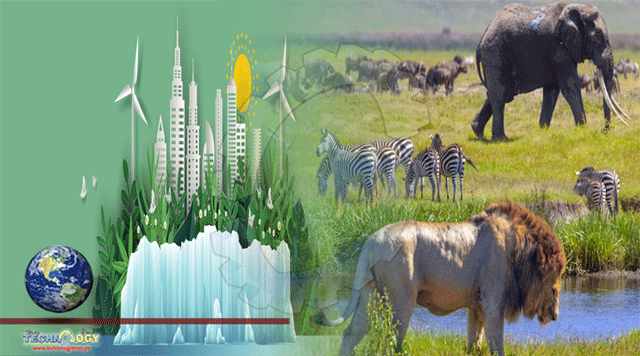In 1972, the Club of Rome’s ground-breaking publication, “Limits to Growth”, predicted that unchecked population growth, coupled with ever-increasing resource consumption, would eventually pose an existential risk to humanity. Fifty years ago, already, the world knew where our trajectory was headed – towards a planetary emergency. We must urgently embark on pathways to avoid passing climate, biodiversity and health tipping points.

Increasing ambition on protecting and restoring nature to secure a planetary safety net for humanity
The opening session of the Nature for Life Hub features a unified voice of dozens of governments from the High Ambition Coalition, the Leaders Pledge for Nature and the Global Oceans Alliance, all calling for bold goals of protecting at least 30 percent of the planet by 2030. Similarly, leaders throughout the event call for the acceleration of restoring a billion hectares by 2030. Achieving these goals will help create a planetary safety net for humanity.
Aligning public and private sector finance
Public- and private-sector finance often serve to accelerate biodiversity loss. For example, nearly 90 percent of agricultural subsidies and incentives go toward activities that can harm nature. Repurposing this finance to foster a just, regenerative transition is a US$470 billion opportunity. Moreover, while the total value of global investment assets under management is more than $100 trillion, it would cost just $400 billion a year to clean up the world’s oceans, expand protected areas to 30 percent of the planet and restore a billion hectares of degraded lands. Creating financial structures to repurpose agricultural subsidies and incentives, and to redirect private capital, is one of the most urgent tasks in this decade – as outlined by the Planetary Emergency Partnership ahead of the G7 Leaders’ Summit.
Aligning business practices
For too long, our market has failed to account for nature’s values. Businesses have had a free pass to profit at the expense of nature, and the era of a nature-blind economy is rapidly coming to a close. The official launch of the Taskforce for Nature-Related Financial Disclosures this month is a sign that businesses will soon be held accountable for their impacts on nature and must align their practices to minimize these impacts if they are to remain competitive.
Reimagining the nature of development by putting nature at the heart of development
If economic and development models are failing to help us thrive in the Anthropocene, how must we reimagine the very nature of development? UNDP’s 2020 Human Development Report provides a clear start – we must change how we measure progress by accounting for impacts on the environment. The launch of the UN Biodiversity Lab, featuring countries developing their own spatial “Map of Hope”, shows a similar path – of governments putting nature at the heart of their sustainable development, climate and biodiversity goals.
Resetting the relationship between people and planet
We cannot achieve our goals for the planet without first respecting the rights of Indigenous peoples and local communities, who traditionally manage a third of the Earth’s lands but only have legal title to a fraction. Granting legal land rights to Indigenous peoples and local communities will ensure that large tracts of intact ecosystems remain intact, providing immense benefits for humanity.
Charting a planetary response to our planetary crisis
Last year, the Club of Rome, in partnership with the Potsdam Institute for Climate Impact Research, wrote a short guide called “Planetary Emergency Plan: Securing a New Deal for People, Nature and Climate.” The plan identified key commitments and transformations needed for a just, nature-positive, low-carbon future. The plan calls on all governments and sectors to adopt their own planetary emergency plan, developing national and sectoral roadmaps for regenerative land use, and green, inclusive circular economies. Nature is an essential piece to the puzzle in fighting climate change. There is an urgent need to address the interconnected climate, biodiversity and health crises as one integrated challenge, and to strive for systemic transformation.
Inspiring hope and global commitment
Next year marks the 50th anniversary not only of the Club of Rome’s Limits to Growth but also of the first United Nations conference on the human environment – the 1972 Stockholm Conference. It’s also the 30th anniversary of the Rio Earth Summit, which gave rise to the three Rio Conventions: the Convention on Biological Diversity, the United Nations Framework Convention on Climate Change, and the United Nations Convention to Combat Desertification. Those two events marked a hopeful period where the world came together to chart a global response to an environmental crisis. If we are to emerge from our planetary emergency, we must come together again, in the same spirit, and with the same resolve, as we did during the Stockholm Conference and the Rio Earth Summit. The three global Conferences of the Parties taking place in the next eight months, and next year’s Stockholm+ 50, offer a chance to do just that.
Fifty years ago, we knew we were headed toward a planetary emergency. And here we are today. We urgently need to change course. The Nature for Life Hub crystallizes an urgent set of transformational pathways that provide the way forward. We must all be part of the solution – to emerge from this emergency together. We cannot wait another 50 years. We cannot wait another decade. It is time to act for a nature-positive future – today.
Originally published by UNDP